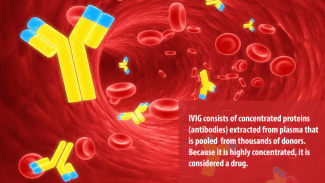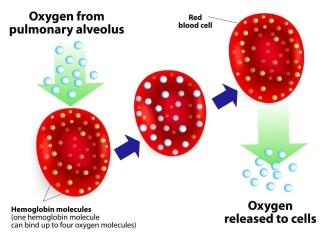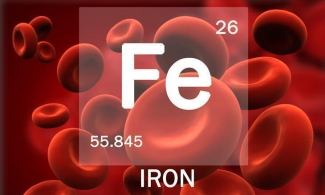Looking back on 2016: A year of research, education and discovery
Wednesday, December 28, 2016 Jenny Ryan
The R.E.D. blog launched in February 2016 and we’ve published 47 articles that have attracted a combined total of 37,000 readers. We hope you’ve enjoyed them.
According to the data, the top-5 articles that attracted the most readers in 2016 were ... (drum roll, please) ...
#5 The wonder drug you’ve probably never heard of – yet
First used in 1952 to treat immune deficiency, IVIg is a plasma protein product containing the pooled antibodies of thousands of donors. For patients who receive multiple IVIg treatments per year, it represents a critical boost of immunity to help their body fight infection or forestall the progress of an autoimmune disorder. For others, one dose of IVIg can be an outright cure.

#4 Hemochromatosis and why blood loss can be a beneficial form of therapy
Blood plays a vital role in our bodies, circulating essential nutrients from the core organs to our extremities and back again. Instinctively, some panic when they cut themselves and see this life-giving liquid escape, even in tiny amounts.
Yet, for a few, loss of blood can be a beneficial form of therapy.

#3 Helping put the science fact in science fiction
The X-Files reboot (Season 10) premiered on Jan. 24 and wrapped up on Feb. 22. Limited to a short but compelling six episodes, the series has left many fans wanting more. One of our own medical directors – Dr. Margaret Fearon, our in-house expert on infectious diseases – played a contributing role in this much-anticipated series revival and was credited as co-writer on the sixth episode.

#2 Data dig uncovers associations between donor characteristics and patient outcomes
Although the blood collection and red blood cell preparation processes are standardized, there are inherent differences in every red blood cell unit because each one comes from a unique, individual donor.
This study sought out to uncover associations between certain donor characteristics and patient outcomes. The findings have generated new research questions that will help us better understand “what’s inside the bag”.

#1 Ferritin findings: investigating iron and impacts on donors
by Jenny Ryan
Dr. Mindy Goldman, medical director of donor and clinical services, has been trying to find out the best ways to mitigate iron deficiency in blood donors. Following an initial study of donors in Ottawa, she and her research team began a larger, more representative national ferritin study to further understand iron deficiency in Canadian donors and identify possible ways to address it.

Our goal in 2016 was to share our research, education and discovery stories and introduce you to the fascinating people behind our work in blood science and transfusion medicine, stem cells, as well as organ and tissue donation and transplantation.
We look forward to a 2017 filled with even more exciting research, education and discovery.
Happy New Year!
Canadian Blood Services – Driving world-class innovation
Through discovery, development and applied research, Canadian Blood Services drives world-class innovation in blood transfusion, cellular therapy and transplantation—bringing clarity and insight to an increasingly complex healthcare future. Our dedicated research team and extended network of partners engage in exploratory and applied research to create new knowledge, inform and enhance best practices, contribute to the development of new services and technologies, and build capacity through training and collaboration.
The opinions reflected in this post are those of the author and do not necessarily reflect the opinions of Canadian Blood Services nor do they reflect the views of Health Canada or any other funding agency.
Related blog posts
A new innovation by a team of Canadian Blood Services researchers and the National HLA Advisory Committee has improved the situation for Canadian transplant patients. Launched in April 2012, the Canadian cPRA Calculator was developed to support Canadian Blood Services’ transplant programs. It’s a...
A research, education. and discovery blog Did you know that we do research? Quite a lot of it, in fact. Last year, our research teams, working in our labs across Canada, published 250+ scientific papers in peer-reviewed journals and presented 200+ posters or talks at major national and international...

